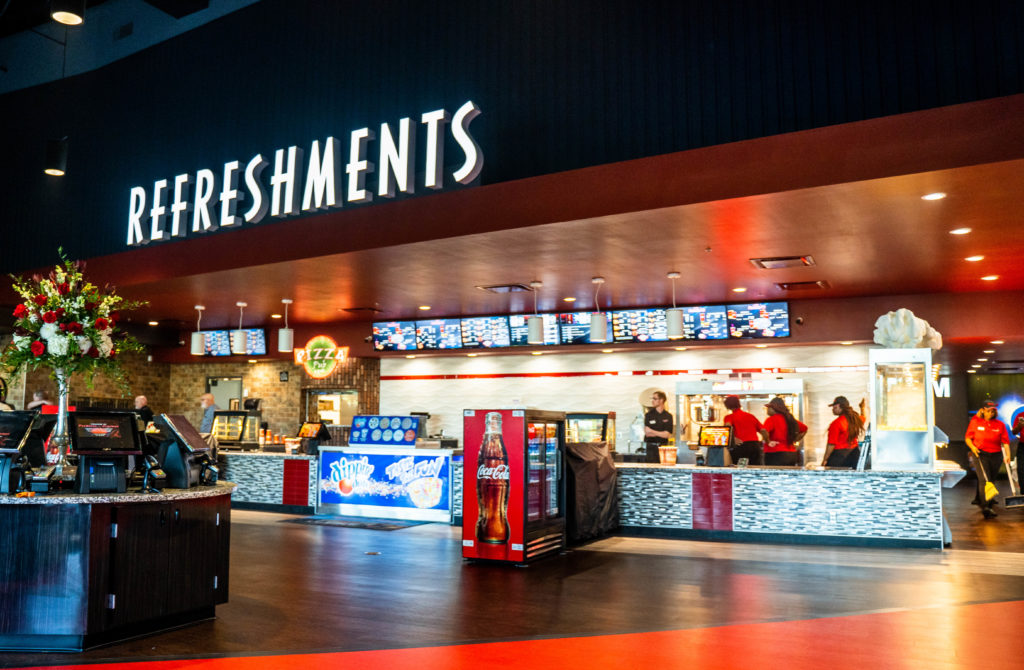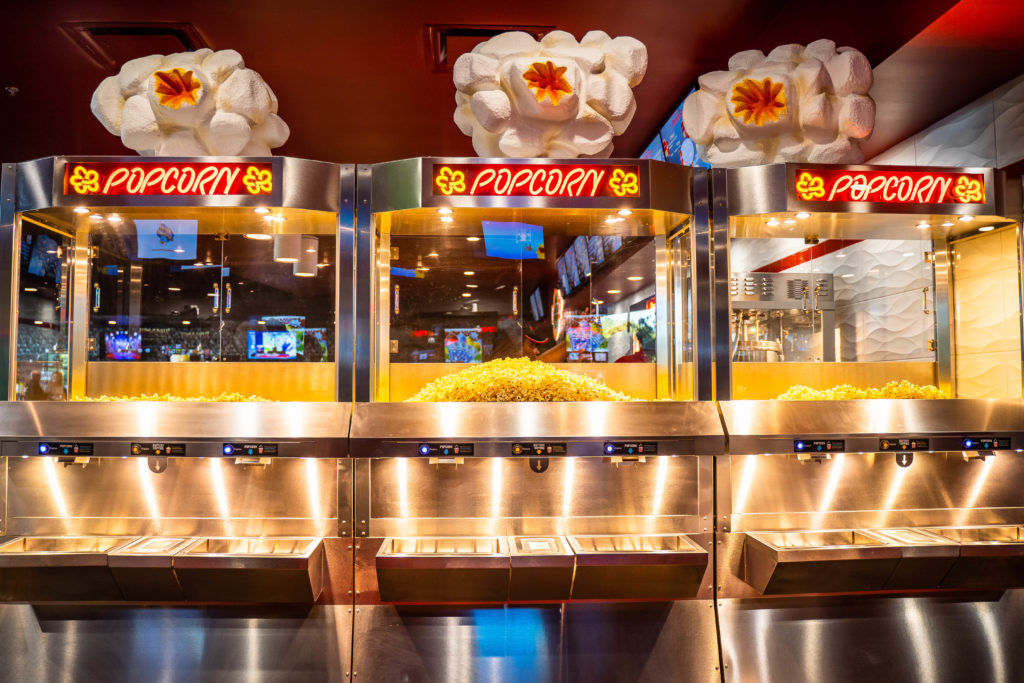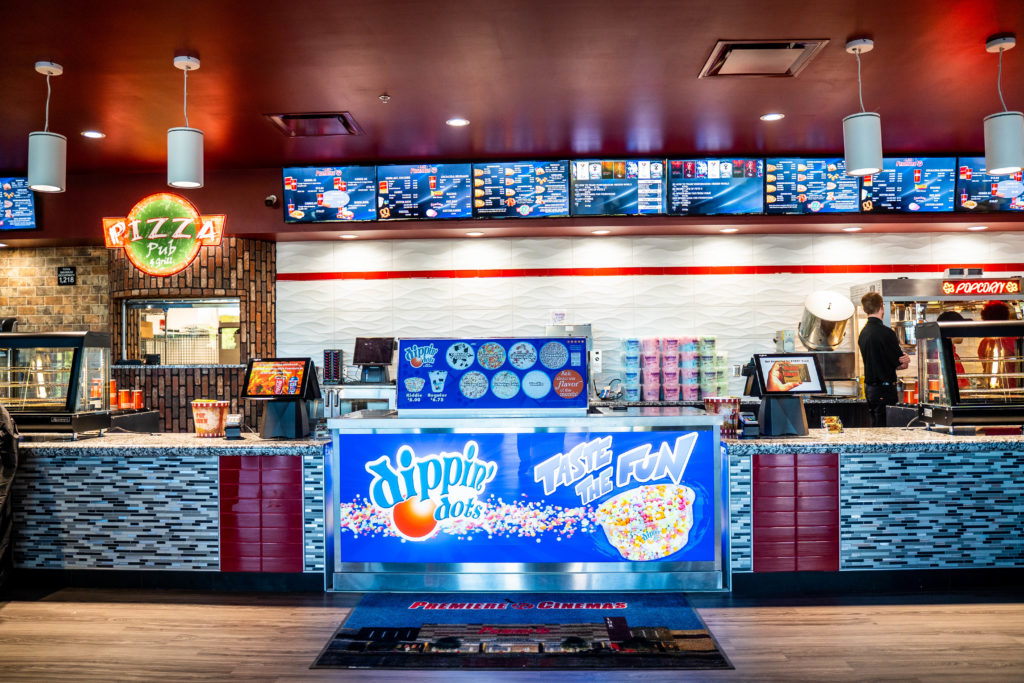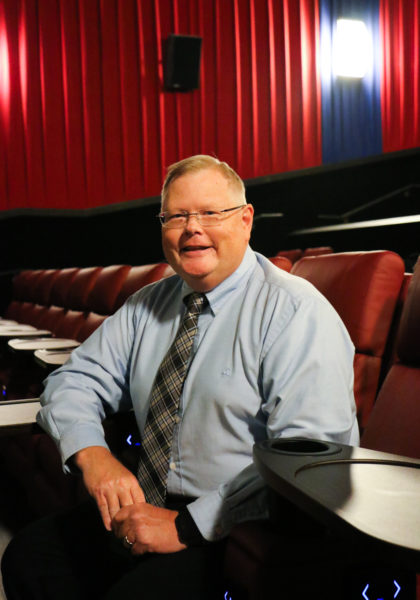What started out as a part-time job in high school turned into a full-fledged career for Joel Davis. Premiere Cinemas’ COO first joined the exhibition industry as a teenager, leaving after graduating college and coming back again in 1998 as a general manager of the chain’s Webster, Texas dollar theater. It only took a year for Davis to make his mark at the circuit, becoming regional manager of the circuit by 1999 and overseeing operations at nine of Premiere’s locations. By 2000, Davis took on an executive role to oversee all of its 28 locations.
Since then, he has spent over two decades helping Premiere establish itself as a top U.S. moviegoing destination. Davis, the recipient of CineShow’s 2022 Frank Liberto Award, which recognizes excellence among concessions and purchasing professionals in exhibition, spoke to Boxoffice Pro about his career at the movies and how he’s helped lead Premiere for nearly 25 years.

How did you end up having a career in exhibition?
It was a part-time job, back in 1989. I was in my senior year of high school, 17 years old, and I had always wanted to work at the movies. That’s the dream job when you’re in high school, when your other choices are the grocery store or mowing lawns. I had so many great experiences working that first summer. I was working at my family’s farm during the day—hauling, cutting, and raking hay. We had about 900 acres where we grew potatoes and soybeans. It was hard work! I would shower after a day working at the farm and get ready for my second job, my paying job, at the movies. I really loved that job … it gave me a chance to sit in the air-conditioning after spending the day working outside in the Texas heat. I worked at that theater all the way through college.
After graduating college, I went to work in juvenile probation—my degree is in criminal justice—until some health issues for one of my relatives brought me back to work for one of my family’s companies. I found myself working for my relative’s dredging company. We built beaches in the Caribbean. My wife and I actually relocated to Ambergris Key [Belize], to the little town of San Pedro, and lived on that island for about a year and a half. We lived on an island 36 miles offshore. The only way to get there was by boat or by Cessna. It didn’t take long for my wife to get island fever.
Around that time, I reconnected with some folks at that theater I worked at through college, let them know I was looking to change careers, and they set me up with Gary Moore, owner of Premiere Cinemas, who was looking for a GM at the time.
I love how that first job experience working part-time in a movie theater in high school ended up resonating so much in your career. What was your first impression of Gary Moore at Premiere?
We hit it off right away. I started as a GM for Premiere in 1998 at a sub-run location—the fourth-largest dollar cinema in the state of Texas. Everything was done by hand back then, from the box office to the concession stand and everything in between. I remember putting together the programs. About three days in, Gary takes me out to lunch and tells me, “In a year’s time, you’ll be running this place—you’re going to be our regional director.” By that time next year, I was managing multiple properties. I was taking everything I had done at that sub-run and implementing it at Premiere’s first-runs across Texas. The company continued to grow until one day, during a meeting with a banker, Gary looked over at me and introduced me as his vice president.
What were some of the lessons you took from those early days at Premiere in the late ‘90s?
I was in charge of the fourth-largest dollar theater in Texas back then. It was a sub-run, so we’d get prints well after they had opened. I remember getting two 35 mm prints of Titanic and selling out those auditoriums on a daily basis. At a dollar theater, our biggest priority was to provide the same level of experience as a first-run. I had one big rule at that location: it didn’t matter if it was the first or last show, the theater had to be perfectly clean throughout the entire day. Our theater, for a dollar or a dollar and a half, was classier than the two first-run theaters we were competing against. We had a really good management staff that I assembled; we really dug down in the trenches and did everything we could to satisfy the customer. That’s what made the difference.
The concessions business has been one of the most significant evolutions in exhibition since you began working in the industry.
I love concessions; it’s probably my favorite part of the business. At Premiere, there have been times when we’ve gone out on a limb and tried some things to see if they work. Sometimes they don’t. You don’t know until you try it. The standard to measure success in the concessions business would be your per capita sales. Looking at that, a lot of it comes down to design. Gary Moore is a trailblazer in our industry when it comes to design. He has the ability to sit down with an architect and draw out a whole set of plans. He also knows when to turn things over to the people in operations that understand how things work on a day-to-day basis. It has been great for me to be able to sit down next to him and go over design ideas to make sure we have a layout that works.
At some of our locations, we’ve installed fast-food-style concession stands, where you order by number, kind of like at a McDonald’s. We designed our concessions menu around that idea, making it easy on the eyes. It’s easy for the consumer to order and super-easy for the staff, who have those combos memorized.
We always look at how to improve things at the concession stand. We redesigned our candy cases so we could display our products to the customer and fulfill their orders as quickly as possible. We had a big success when we changed up our warmers. I called Gold Medal Products to get new popcorn warmers we could stick in front of our concession stands, so customers could see the fresh popcorn right in front of them when they line up to order. We did the same with our nachos, making sure our customers could see them. Our per caps went up so high after we did that.

How have you been able to keep pace with changes in consumer behavior at the concession stand over the years?
At Premiere, there have been times when we’ve gone out on a limb and tried some things just to see if they work. Sometimes they don’t; you don’t know until you try it. Self-serve candy stations are one of those things that I never thought would work. Just having candy sit there so customers can grab it and walk away with it? No way that’s going to work. We like to innovate, so we tried it at one location, and we doubled our candy sales in one weekend. So all those candy cases we designed? They go by the wayside, and we pivot to self-serve candy. When you look at the data, self-serve concessions make a lot of sense. Today, if you go to a Premiere location, we have self-serve candy and soda, and we’ve just begun implementing self-serve popcorn. Customers love that concept; it makes them feel like they’re at a buffet with our concessions. When done right, self-serve gives your guests the perception that they’re getting more value for their money.
We let our per caps guide the direction we take when it comes to concessions. That’s how we’ve moved toward the self-serve concept. I was surprised to find how labor intensive self-serve stations are. You would think you need fewer personnel if the customers are serving themselves, but it actually requires you to have enough personnel to make sure the self-serve areas are clean and well maintained. If you take your eyes off it, it’s going to be a mess and it won’t be appealing to the customer.
The next big evolution for Premiere on the F&B side was incorporating enhanced menus. Today, you’re known for your Pizza Pub concept. How did you develop and launch that idea?
You look at the state of Texas, and we have so many industry colleagues that have done such a great job in the dine-in space. You have specialized circuits like Alamo Drafthouse and Studio Movie Grill and Family Entertainment Centers like Cinergy—from the same team that founded Movie Tavern—that have perfected the concept over the years. We came to it as a traditional movie theater, really admiring what our colleagues here in Texas had done and looking to add that F&B dimension.
We started with our location in Bryan, Texas—right by College Station, a college town home to Texas A&M. We built a stand-alone restaurant there, and I brought in a chef to put together all the recipes. I’m a concessions guy, so I needed to be brought up to speed on how an expanded F&B business would work at our cinemas. That location was our first with an alcohol license, so we brought in beer and wine. We didn’t call it a Pizza Pub at the time; we referred to it as our Bistro, and we learned a lot about the F&B business through that experience.
The next phase was in a new location we opened in Lubbock, Texas. That site turned out to be one of the biggest learning experiences we’ve had. We employed three F&B managers at that location, two of them chefs with credentials from Texas Tech. It turned out to be a really good experiment. We kept learning a little bit more and more about how to refine the concept.
The next evolution came when we took over a former United Artists location in Grand Prairie, Texas, that had been sitting vacant for about three years. It wasn’t a big site; we had to figure out how to fit 10 screens in what should have been a 65,000-square-foot building into 40.000 square feet. We did a full remodel, adding a Pizza Pub and a bar.
We built that bar from scratch and designed it with a draft beer system with 10 different beers on tap. Instead of tucking the bar away in the back, as we had done in other locations, we stuck it right out in the front. That changed the dynamic completely for us. It was a whole different experience as soon as guests came in through our doors. Right past the bar, we added a pizza kitchen, so all of sudden we had this great energy of a bar and restaurant as the focal point of our lobby. Our F&B director, Jimmy Levinson, who specializes in Italian food, designed the menu. The whole concept just clicked for us. It was a perfect combination: beer and pizza.

Would you consider that to be the biggest evolution on the F&B side for Premiere?
That was definitely the biggest evolution, finding an F&B concept that worked for us. So we sat down with our operations team and CEO and decided that the Pizza Pub was the way to go for our circuit. Our Pizza Pubs have connected so well with audiences, and we’re not looking back. Dine-in is so competitive in Texas, and in order to add expanded menus in your circuit, you really need to find a concept, perfect it, and make it your own.
Innovating, pivoting, launching new concepts—like anything else, it just comes down to learning better ways of doing things the more you do them. That’s how we’ve been able to grow as a circuit, by asking the right questions and getting better at putting things together over time.



Share this post